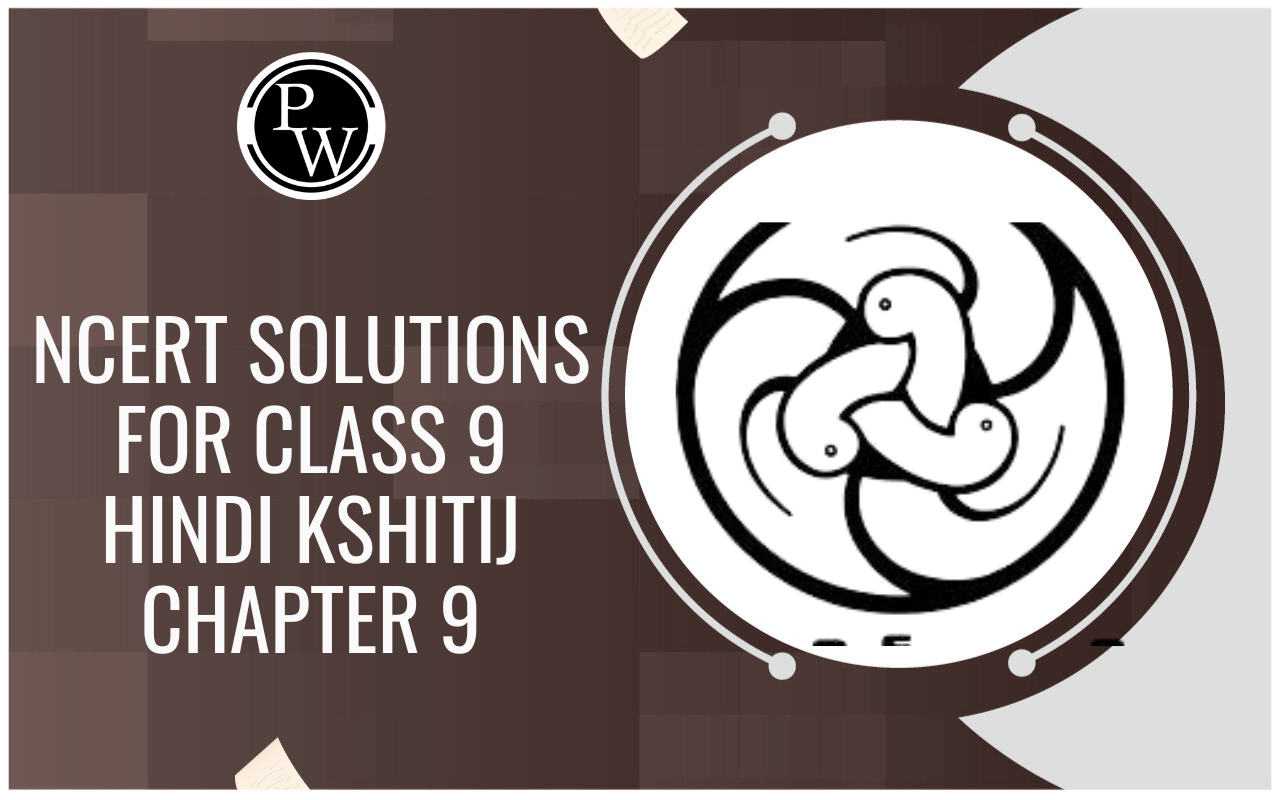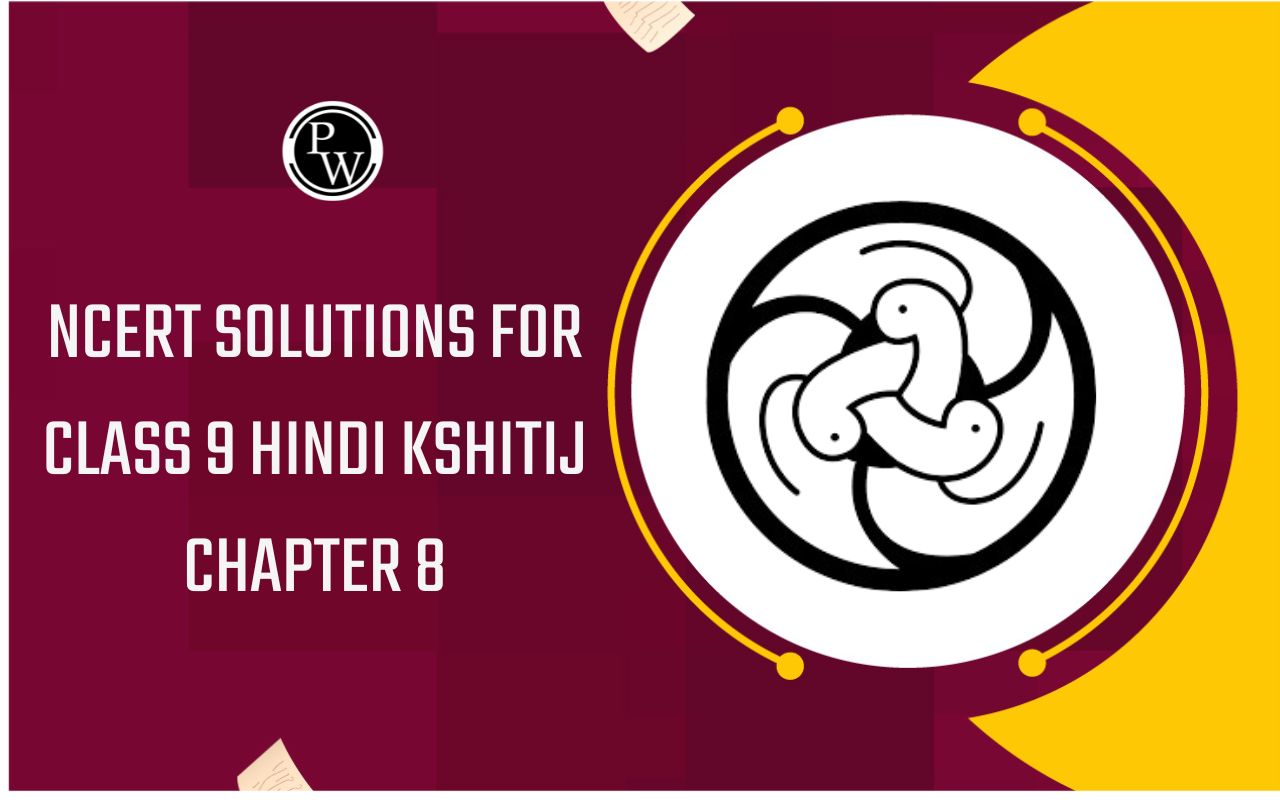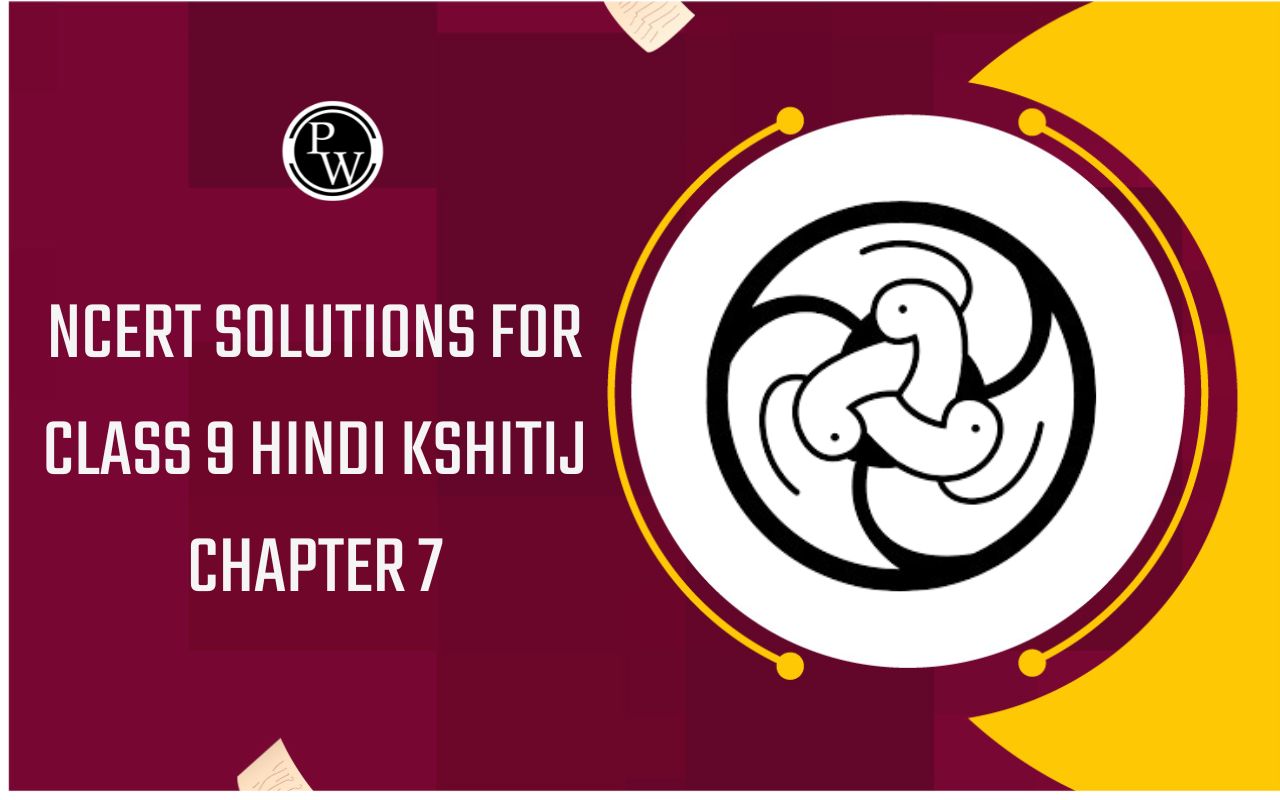
NCERT Solutions for Class 10 Maths Updated 2024-25
Mathematics is a crucial subject, but many students find it challenging to grasp. To address this, the Physics Wallah team has developed comprehensive NCERT solutions for Class 10 Maths . Our primary goal is to simplify math concepts and make them easily understandable, boosting students' confidence in their mathematical abilities. These solutions are designed to be invaluable resources for improving math scores and overall performance.
Students can access the NCERT Solutions for class 10 Maths in PDF format using the given links. This allows them to study and review the material at their own pace, making it more convenient for them. With our dedicated efforts, we aim to make mathematics an enjoyable and accessible subject for all students, instilling a strong foundation that will serve them well in their academic and professional pursuits.
NCERT Solutions for Class 10 Maths Chapter-Wise List
The Class 10 Mathematics syllabus comprises 15 chapters, as outlined in the table provided. NCERT Solutions for Class 10 Maths are essential tools that play a crucial role in helping students comprehend the concepts with ease. These solutions are presented simplified, making the subject more accessible and promoting effective learning and understanding. Students find great value in utilizing these resources to improve their grasp of the subject and enhance their overall performance.
| NCERT Solutions Class 10 Maths Chapter-wise List |
| Chapter 1 - Real Numbers |
| Chapter 2 - Polynomials |
| Chapter 3 - Pair of Linear Equations in Two Variables |
| Chapter 4 - Quadratic Equations |
| Chapter 5 - Arithmetic Progressions |
| Chapter 6 - Triangles |
| Chapter 7 - Coordinate Geometry |
| Chapter 8 - Introduction to Trigonometry |
| Chapter 9 - Some Applications of Trigonom |
| Chapter 10 - Circles |
| Chapter 11 - Constructions |
| Chapter 12 - Areas Related to Circles |
| Chapter 13 - Surface Areas and Volumes |
| Chapter 14 - Statistics |
| Chapter 15 - Probability |
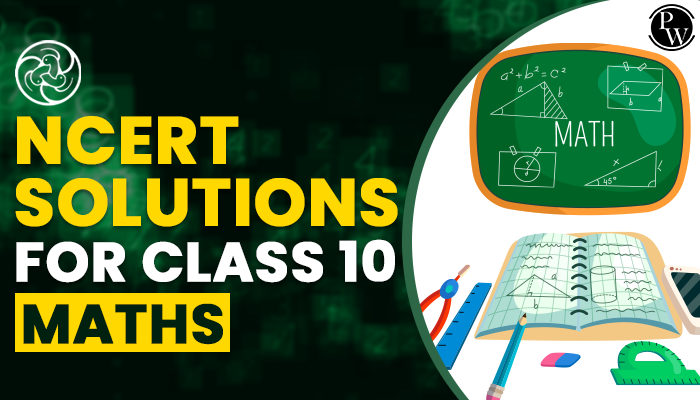
NCERT Solutions for Class 10 Maths Chapter 1 - Real Numbers
In class 10 chapter 1 , students will explore real and irrational numbers. The chapter begins with Euclid's division lemma, which states that "given positive integers a and b, there exist unique integers qar satisfying a = bq + r, 0≤r<b". The Euclidean division algorithm is based on this lemma and is used to compute the HCF of two given positive integers. Therefore, the Fundamental Theorem of Arithmetic is defined, which is used to find the LCM and HCF of two positive integers. Then the concept of irrational number, rational number and decimal expansion of rational numbers is explained using the theorem.
Topics Covered in this chapter are- Fundamental Theorem of Arithmetic – statements after reviewing work done before and after illustrating and motivating through examples, Proofs of irrationality of √2, √3, √5.
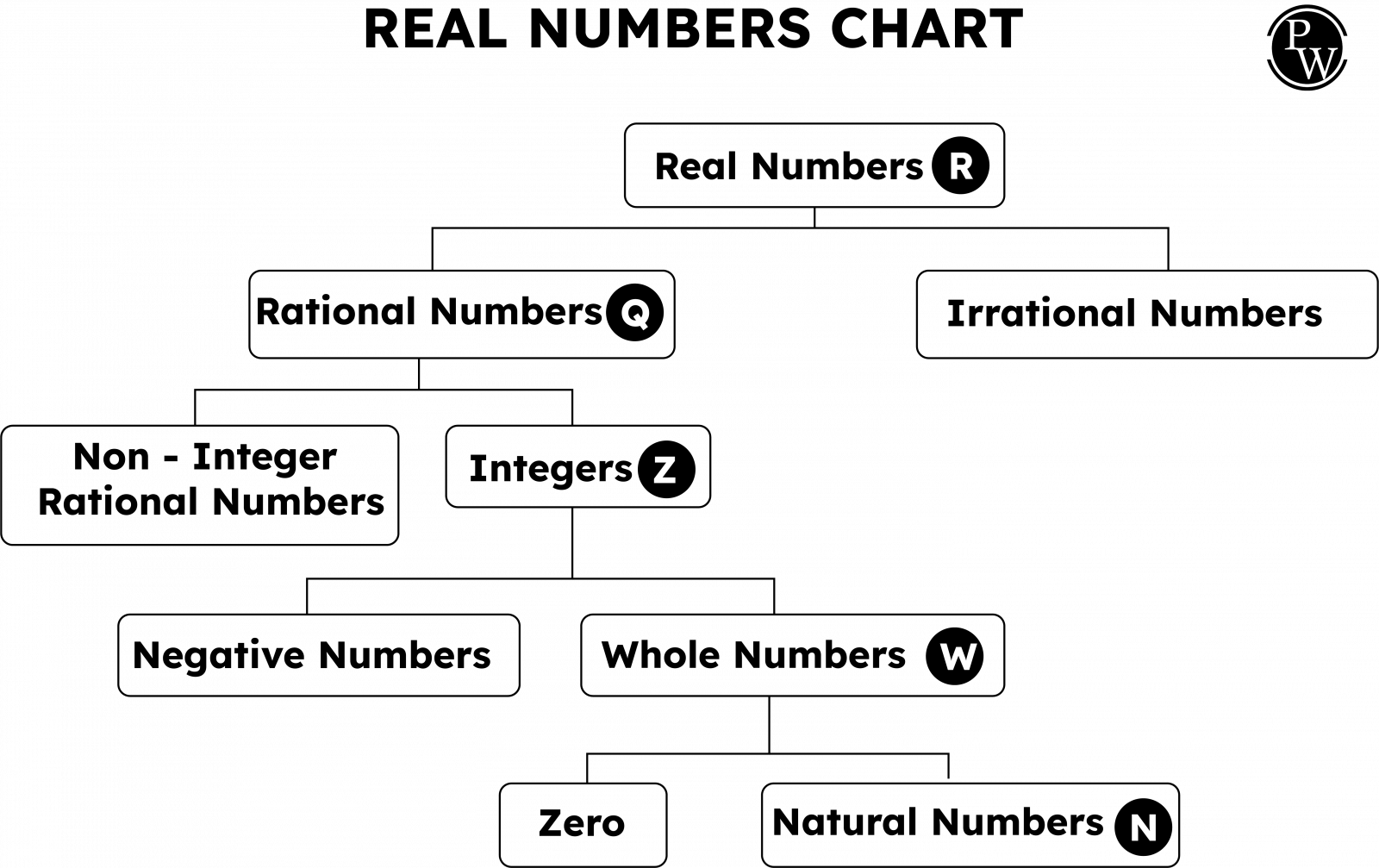
| NCERT Solutions for Class 10 Maths Chapter 1 Real Numbers Exercises |
| Exercise 1.1 |
| Exercise 1.2 |
| Exercise 1.3 |
| Exercise 1.4 |
Also, access the helpful resources for Class 10 Maths Chapter 1 Real Numbers at Physics Wallah
- Important questions for class 10 Maths Chapter 1 Real Numbers
- RD Sharma Solutions for Class 10 Chapter 1 Real Numbers
- RS Aggarwal class 10 solutions Chapter 1 Real Numbers
NCERT Solutions for Class 10 Maths Chapter 2 - Polynomials
In Polynomials, the chapter begins by defining the degree of a polynomial, a linear polynomial, a quadratic polynomial, and a cubic polynomial. This chapter consists of 4 exercises, including an optional exercise. Exercise 2.1 contains questions about finding the number of zeros in a graph. It requires understanding the geometric meaning of the zeros of a polynomial. Exercise 2.2 is based on the Relationship between Zeros and Coefficients of a Polynomial, where students must find the zeros of a quadratic polynomial. In some questions, they have to find a quadratic polynomial. In Exercise 2.3, the term division algorithm is defined, and students will find related questions. Additional exercise 2.4 consists of questions from all concepts of chapter 2.
Topics Covered in this chapter are- Zeros of a polynomial, Relationship between zeros and coefficients of quadratic polynomials.
| NCERT Solutions for Class 10 Maths Chapter 2 Polynomials Exercises |
| Exercise 2.1 |
| Exercise 2.2 |
| Exercise 2.3 |
| Exercise 2.4 |
Also, access the helpful resources for Class 10 Maths Chapter 2 Polynomials at Physics Wallah
- Important questions for class 10 Maths Chapter 2 Polynomials
- RD Sharma Solutions for Class 10 Chapter 2 Polynomials
- RS Aggarwal class 10 solutionsChapter 2 Polynomials
NCERT Solutions for Class 10 Maths Chapter 3 - Pair of Linear Equations in Two Variables
This chapter explains the concept of a pair of linear equations in two variables. This chapter contain a total of 7 exercises, and in these exercises, different methods of solving a pair of linear equations are described. Exercise 3.1 describes how to represent the situation algebraically and graphically. Exercise 3.2 explains methods for solving a pair of linear equations using the graphical method. And exercises 3.3, 3.4, 3.5, and 3.6 describe the algebraic method, the elimination method, the cross-multiplication method, and the substitution method. Exercise 3.7 is an optional exercise that contains all types of questions. Students must practice these exercises to master the method of solving linear equations.
Topics Covered in this chapter are- Pair of linear equations in two variables and graphical method of their solution, consistency/ inconsistency. Algebraic conditions for number of solutions. Pair of linear equations in two variables solution – by substitution, by elimination. Simple situational problems.
| NCERT Solutions for Class 10 Maths Chapter 3 Pair of Linear Equations in Two Variables |
| Exercise 3.1 |
| Exercise 3.2 |
| Exercise 3.3 |
| Exercise 3.4 |
| Exercise 3.5 |
| Exercise 3.6 |
| Exercise 3.7 |
Also, access the helpful resources for Class 10 Maths Chapter 3 Pair of Linear Equations in Two Variables at Physics Wallah
- Important questions for class 10 Maths Chapter 3 Pair of Linear Equations in Two Variables
- RD Sharma Solutions for Class 10 Chapter 3 Pair of Linear Equations in Two Variables
- RS Aggarwal class 10 solutions Chapter 3 Pair of Linear Equations in Two Variables
NCERT Solutions for Class 10 Maths Chapter 4 - Quadratic Equations
In this chapter, students will discuss the standard form of writing a Quadratic Equation. The chapter properly explain the method of solving the quadratic equation through the completing the square method and factorization method. The chapter finish with the topic on finding the nature of roots which means, a quadratic equation ax² + bx + c = 0 has:
- Two distinct real roots, if b² – 4ac > 0
- Two equal roots, if b² – 4ac = 0
- No real roots, if b² – 4ac < 0
Topics Covered in this chapter are- Standard form of a quadratic equation ax2 + bx + c = 0, (a ≠ 0). Solutions of quadratic equations (only real roots) by factorization, and by using quadratic formula. Relationship between discriminant and nature of roots.
| NCERT Solutions for Class 10 Maths Chapter 4 Quadratic Equations Exercises |
| Exercise 4.1 |
| Exercise 4.2 |
| Exercise 4.3 |
| Exercise 4.4 |
Also, access the helpful resources for Class 10 Maths Chapter 4 Quadratic Equations at Physics Wallah
- Important questions for class 10 Maths Chapter 4 Quadratic Equations
- RD Sharma Solutions for Class 10 Chapter 4 Quadratic Equations
- RS Aggarwal class 10 solutions Chapter 4 Quadratic Equations
NCERT Solutions for Class 10 Maths Chapter 5 - Arithmetic Progressions
This chapter introduces students to the new topic of Arithmetic Progression or AP. The chapter contains a total of 4 exercises. In Exercise 5.1, students will find questions about representing a situation in AP form, finding the first term and difference of an AP, and determining whether a series is an AP or not. Exercise 5.2 contains questions on finding the nth term of an AP using the following formula:
a n = a + (n-1) d
In the next exercise i.e., 5.3, contains the questions on finding the sum of first n terms of an AP. The last exercise includes higher-level questions based on AP to enhance students’ analytical and problem-solving skills.
Topics Covered in this chapter are- Arithmetic Progression, Derivation of the nth term and the sum of the first n terms of A.P. and their application in solving daily life problems.
| NCERT Solutions for Class 10 Maths Chapter 5 Arithmetic Progressions Exercises |
| Exercise 5.1 |
| Exercise 5.2 |
| Exercise 5.3 |
| Exercise 5.4 |
Also, access the helpful resources for Class 10 Maths Chapter 5 Arithmetic Progressions at Physics Wallah
- Important questions for class 10 Maths Chapter 5 Arithmetic Progressions
- RD Sharma Solutions for Class 10 Chapter 5 Arithmetic Progressions
- RS Aggarwal class 10 solutions Chapter 5 Arithmetic Progressions
NCERT Solutions for Class 10 Maths Chapter 6 - Triangles
Chapter 6 of Class 10 covers the topic of triangles. It focuses on figures with the same shape but different sizes, explaining the concept of similarity in triangles and the associated theorems. The chapter also introduces the idea of congruent triangles. Moreover, it explains the theorems concerning triangle areas, the Pythagorean theorem, and the converse of the Pythagorean theorem.
Students must be familiar with the following theorems for their exam preparation:
- Theorem of Proportionality: If a line is drawn parallel to one side of a triangle and intersects the other side at distinct points, the two sides are divided in the same ratio.
- Parallel Line Theorem: If a line divides any two sides of a triangle in the same ratio, then the line is parallel to the third side.
- Similar Triangles Theorem: If the corresponding angles of two triangles are equal, their corresponding sides are in the same ratio, making the triangles similar.
- Proportional Sides Theorem: If the sides of one triangle are proportional to the sides of another triangle, their corresponding angles are equal, and the triangles are similar.
- Angle-Side Similarity Theorem: If one angle of a triangle is equal to one angle of another triangle, and the sides, including these angles, are proportional, then the two triangles are similar.
- Area Ratio Theorem: The ratio of the areas of two similar triangles is equal to the square of the ratio of their corresponding sides.
- Right Triangle Perpendicular Theorem: In a right triangle, if a perpendicular is drawn from the right-angle vertex to the hypotenuse, the resulting triangles on both sides of the perpendicular are similar to the whole triangle and each other.
- Pythagorean Theorem: In a right triangle, the square of the hypotenuse equals the sum of the squares of the other two sides.
- Converse of the Pythagorean Theorem: In a triangle, if the square of one side is equal to the sum of the squares of the other two sides, then the angle opposite the first side is a right angle.
- Understanding these theorems will help students excel in their studies and perform well in the examination.
Also, access the helpful resources for Class 10 Maths Chapter 6 Triangles at Physics Wallah
- Important questions for class 10 Maths Chapter 6 Triangles
- RD Sharma Solutions for Class 10 Chapter 6 Triangles
- RS Aggarwal class 10 solutions Chapter 6 Triangles
NCERT Solutions for Class 10 Maths Chapter 7 - Coordinate Geometry
In the chapter 7, students will learn how to find the distance between two points whose coordinates are given and the area of the triangle formed by the three given points. Students will also learn how to find the coordinates of a point that bisects a line joining the two given points in a given ratio. In the end, students will be introduced to the distance formula, the section formula, and the area of a triangle in this Coordinate Geometry chapter.
Topics Covered in this chapter are- the concepts of coordinate geometry, graphs of linear equations. Distance formula. Section formula (internal division).
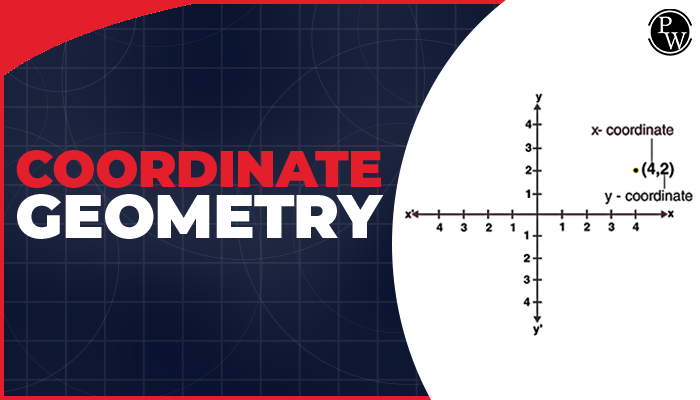
| NCERT Solutions for Class 10 Maths Chapter 7 Coordinate Geometry Exercises |
| Exercise 7.1 |
| Exercise 7.2 |
| Exercise 7.3 |
| Exercise 7.4 |
Also, access the helpful resources for Class 10 Maths Chapter 7 Coordinate Geometry at Physics Wallah
- Important questions for class 10 Maths Chapter 7 Coordinate Geometry
- RD Sharma Solutions for Class 10 Chapter 7 Coordinate Geometry
- RS Aggarwal class 10 solutions Chapter 7 Coordinate Geometry
NCERT Solutions for Class 10 Maths Chapter 8 - Introduction to Trigonometry
In Chapter 8 of NCERT Solutions, students are introduced to trigonometry, which involves studying the ratios of right triangles with respect to their acute angles. These ratios are called trigonometric ratios. The chapter explains trigonometric ratios for angles such as 0° and 90°, and students are taught how to calculate these ratios for given angles. Additionally, they are introduced to some important trigonometric identities.
This chapter serves as a fundamental introduction to trigonometry, and it is beneficial for students not only in Class 10 but also in higher classes like Class 11 and 12. Students are taught introductory trigonometry formulas, which help them establish a solid foundation for their future studies in the subject.
Furthermore, the chapter explains the relationship between trigonometric ratios and angles. Students are introduced to important complementary angle trigonometric ratios, such as sin (90° – A) = cos A, cos (90° – A) = sin A, tan (90° – A) = cot A, cot (90° – A) = tan A, sec (90° – A) = cosec A, and cosec (90° – A) = sec A.
Additionally, they learn fundamental trigonometric identities, such as sin^2 A + cos^2 A = 1, sec^2 A – tan^2 A = 1 for 0° ≤ A < 90°, and cosec^2 A = 1 + cot^2 A for 0° < A ≤ 90°. These concepts are essential tools for solving trigonometry problems and understanding the relationship between different trigonometric functions.
Also, access the helpful resources for Class 10 Maths Chapter 8 Introduction to Trigonometry at Physics Wallah
- Important questions for class 10 Maths Chapter 8 Introduction to Trigonometry
- RD Sharma Solutions for Class 10 Chapter 8 Introduction to Trigonometry
- RS Aggarwal class 10 solutions Chapter 8 Introduction to Trigonometry
NCERT Solutions for Class 10 Maths Chapter 9 - Some Applications of Trigonom
In Chapter 9, we build upon the concepts learned in Chapter 8 and explore the practical applications of trigonometry in our daily lives. In this chapter, trigonometry calculates the height and distance of various objects in real-world situations. It shows how trigonometry is crucial in navigation, helping us find directions and positions accurately. Additionally, the chapter demonstrates the application of trigonometry in construction projects, allowing us to calculate angles and distances for creating structures.
Furthermore, trigonometry is widely used in geography and mapping, enabling us to determine the positions of various locations based on their latitude and longitude coordinates. This chapter sheds light on how trigonometry is practically applied to solve real-world problems and enhance our understanding of the world around us. The skills gained from this chapter can be valuable in numerous fields, making trigonometry a versatile and important topic to teach.
Also, access the helpful resources for Class 10 Maths Chapter 9 Some Applications of Trigonometry at Physics Wallah
- Important questions for class 10 Maths Chapter 9 Some Applications of Trigonometry
- RD Sharma Solutions for Class 10 Chapter 9 Some Applications of Trigonometry
- RS Aggarwal class 10 solutions Chapter 9 Some Applications of Trigonometry
NCERT Solutions for Class 10 Maths Chapter 10 - Circles
In Class 10 Maths, Chapter 10 builds upon the knowledge of circles studied in previous classes. This chapter introduces the concept of tangents and explores the number of tangents that can be drawn from a point on a circle.
This chapter covers two important theorems:
- Theorem 1: At any point on a circle, the tangent drawn is always perpendicular to the radius passing through that point of contact.
- Theorem 2: When drawing tangents from an external point to a circle, the lengths of these tangents will be equal.
Understanding these theorems is crucial, as they help determine various properties and relationships between circles and tangents. Understanding the concept of tangents and their relationship with circles is a crucial step in studying circles. This knowledge is a foundation for more advanced concepts taught in higher classes.
Also, access the helpful resources for Class 10 Maths Chapter 10 Circles at Physics Wallah
- Important questions for class 10 Maths Chapter 10 Circles
- RD Sharma Solutions for Class 10 Chapter 10 Circles
- RS Aggarwal class 10 solutions Chapter 10 Circles
NCERT Solutions for Class 10 Maths Chapter 11 - Constructions
Chapter 11 is an exciting and practical chapter on constructing various geometric figures. In this lesson, students will learn how to divide a line segment and draw tangents to a circle. The chapter provides clear and detailed explanations of the construction methods, making it easier for students to grasp the concepts.
The chapter presents step-by-step methods and plenty of examples before each exercise for constructing tangents to a circle. These examples are designed to aid students in better-comprehending construction techniques and the underlying theorems. By following the examples and practicing the exercises, students can enhance their skills in geometric constructions and gain confidence in solving construction-based problems. This chapter provides valuable hands-on experience, which is interesting and lays a strong foundation for more complex constructions in higher classes.
Also, access the helpful resources for Class 10 Maths Chapter 11 Constructions at Physics Wallah
- Important questions for class 10 Maths Chapter 11 Constructions
- RD Sharma Solutions for Class 10 Chapter 11 Constructions
- RS Aggarwal class 10 solutions Chapter 11 Constructions
NCERT Solutions for Class 10 Maths Chapter 12 - Areas Related to Circles
In this chapter, we delve into the concepts of the perimeter and area of a circle. We will explore how to calculate a sector's area and a circle's segment. Moreover, the chapter covers finding the area of figures containing either a whole circle or a part of it.
Some important formulas to remember and practice within this chapter are:
- Circumference = 2πr (where r is the radius of the circle)
- Area of the circle = πr^2 (where r is the radius of the circle)
- Area of a sector of angle θ = (θ/360) × πr^2 (where θ is the angle of the sector and r is the radius of the circle)
- Length of an arc of a sector of angle θ = (θ/360) × 2πr (where θ is the angle of the sector and r is the radius of the circle)
Understanding and applying these formulas will enable students to calculate the perimeter and area of circles easily. They can also find areas of different shapes involving circles or circular segments. This chapter equips students with practical skills to solve circle-related problems in various scenarios.
Also, access the helpful resources for Class 10 Maths Chapter 12 Areas Related to Circles at Physics Wallah
- Important questions for class 10 Maths Chapter 12 Areas Related to Circles
- RD Sharma Solutions for Class 10 Chapter 12 Areas Related to Circles
- RS Aggarwal class 10 solutions Chapter 12 Areas Related to Circles
NCERT Solutions for Class 10 Maths Chapter 13 - Surface Areas and Volumes
Chapter 13 of Class 10 Maths NCERT book PDF solution deals with surface areas and volumes of various objects and shapes. In this chapter, five exercises involve finding the surface area of complex objects formed by combining two or more solid shapes. The solid shapes covered in the exercises are cuboid, cone, sphere, hemisphere, and cylinder. Students also learn how to find the volume of objects of different solid shapes and convert them from one shape to another.
Key formulas used for calculating surface areas and volumes of different objects:
Total Surface Area (TSA) of a new solid = Curved Surface Area (CSA) of one hemisphere + CSA of cylinder + CSA of another hemisphere.
Diameter of a sphere = 2r (where r is the radius).
Surface Area of a sphere = 4πr².
Volume of a sphere = (4/3)πr³.
Curved Surface Area of a cylinder = 2πrh (where r is the radius and h is the height).
Area of two circular bases of a cylinder = 2πr².
Total Surface Area of a cylinder = Circumference of cylinder + Curved Surface Area of cylinder = 2πrh + 2πr².
The volume of a cylinder = πr²h.
The slant height of a cone = l = √(r² + h²) (where r is the radius and h is the height).
Curved Surface Area of a cone = πrl.
Total Surface Area of a cone = πr(l + r).
Volume of a cone = (1/3)πr²h.
The perimeter of a cuboid = 4(l + b + h) (where l, b, and h are the length, breadth, and height, respectively).
Length of the longest diagonal of a cuboid = √(l² + b² + h²).
Total Surface Area of a cuboid = 2(lb + bh + lh) (where l, b, and h are the length, breadth, and height, respectively).
The volume of a cuboid = lbh (where l, b, and h are the length, breadth, and height, respectively).
By understanding and applying these formulas, students can efficiently solve problems related to surface areas and volumes of various shapes and objects. These concepts are widely applicable in real-life scenarios, making this chapter practical and relevant.
Also, access the helpful resources for Class 10 Maths Chapter 13 Surface Areas and Volumes at Physics Wallah
- Important questions for class 10 Maths Chapter 13 Surface Areas and Volumes
- RD Sharma Solutions for Class 10 Chapter 13 Surface Areas and Volumes
- RS Aggarwal class 10 solutions Chapter 13 Surface Areas and Volumes
NCERT Solutions for Class 10 Maths Chapter 14 - Statistics
In this chapter, students explore the fascinating world of representing data numerically, whether in grouped or ungrouped form. They learn valuable techniques for calculating the mean, median, and mode of a given dataset, which helps in understanding the central tendencies of the data.
The subsequent exercise delves into the concept of cumulative frequency distribution, allowing students to create cumulative frequency curves. These curves visually represent the cumulative data frequencies, providing a more comprehensive understanding of the dataset's distribution.
Overall, this chapter equips students with essential tools for analyzing and interpreting data, making it a crucial aspect of mathematics that finds applications in various fields. By learning these techniques, students will be able to make informed decisions based on data and gain valuable insights from it.
Also, access the helpful resources for Class 10 Maths Chapter 14 Statistics at Physics Wallah
- Important questions for class 10 Maths Chapter 14 Statistics
- RD Sharma Solutions for Class 10 Chapter 14 Statistics
- RS Aggarwal class 10 solutions Chapter 14 Statistics
NCERT Solutions for Class 10 Maths Chapter 15 - Probability
Chapter 15 of NCERT Solutions for Class 10 Maths is all about probability. It covers two main types of probability: experimental probability and theoretical probability. The chapter uses numerous examples to help learners understand the concept of probability effectively.
Probability is a crucial chapter for students to focus on, as it serves as a foundation for future discussions and new topics in higher classes. A strong grasp of the basics in class 10 makes it easier for students to understand the formulas and concepts introduced in advanced classes. Probability becomes a chapter where students can score well in exams with proper understanding and sufficient practice.
By mastering probability, students develop essential skills to analyse uncertainties and make informed decisions based on data. Understanding probability is beneficial in various fields of study and real-life situations. Therefore, devoting time and effort to grasp the concepts in this chapter will be valuable in the long run.
Also, access the helpful resources for Class 10 Maths Chapter 15 Probability at Physics Wallah
- Important questions for class 10 Maths Chapter 15 Probability
- RD Sharma Solutions for Class 10 Chapter 15 Probability
- RS Aggarwal class 10 solutions Chapter 15 Probability
NCERT Solutions For Class 10 Maths PDF
Class 10 Maths covers a total of 15 chapters. here we are providing students NCERT Solutions for class 10 Maths. That will help students to enhance their maths skills easily and conveniently. Check below the NCERT Solution for Class 10 Maths PDF.
| NCERT Solutions Class 10 Maths Chapter-wise List |
| NCERT Solutions for Class 10 Maths Chapter 1 - Real Numbers |
| NCERT Solutions for Class 10 Maths Chapter 2 - Polynomials |
| NCERT Solutions for Class 10 Maths Chapter 3 - Pair of Linear Equations in Two Variables |
| NCERT Solutions for Class 10 Maths Chapter 4 - Quadratic Equations |
| NCERT Solutions for Class 10 Maths Chapter 5 - Arithmetic Progressions |
| NCERT Solutions for Class 10 Maths Chapter 6 - Triangles |
| NCERT Solutions for Class 10 Maths Chapter 7 - Coordinate Geometry |
| NCERT Solutions for Class 10 Maths Chapter 8 - Introduction to Trigonometry |
| NCERT Solutions for Class 10 Maths Chapter 9 - Some Applications of Trigonom |
| NCERT Solutions for Class 10 Maths Chapter 10 - Circles |
| NCERT Solutions for Class 10 Maths Chapter 11 - Constructions |
| NCERT Solutions for Class 10 Maths Chapter 12 - Areas Related to Circles |
| NCERT Solutions for Class 10 Maths Chapter 13 - Surface Areas and Volumes |
| NCERT Solutions for Class 10 Maths Chapter 14 - Statistics |
| NCERT Solutions for Class 10 Maths Chapter 15 - Probability |
Benefits of Class 10 Math NCERT Books and Solutions
Class 10 Math NCERT books and solutions offer several benefits to students, making them an essential resource for their mathematical journey. Some key benefits include
- Comprehensive Coverage: NCERT books cover all essential Class 10 Math topics, providing a structured syllabus and step-by-step explanations for easier learning.
- Clear and Concise Language: The simple and clear language in NCERT books helps students understand complex mathematical concepts better.
- Alignment with Curriculum: NCERT strictly follows educational board curriculums, ensuring students cover necessary topics for exams.
- Builds Strong Fundamentals: NCERT solutions focus on building a strong foundation by explaining concepts in-depth, benefiting higher classes and other fields of study.
- Numerous Examples and Exercises: The books include many examples and exercises for practice and reinforcing understanding.
- Exam-Oriented Approach: NCERT solutions prepare students effectively for exams with exam-oriented questions matching competitive exam patterns.
- Authentic and Reliable: NCERT is reputable and experienced educators and subject matter experts prepare its books.
- Conceptual Clarity: NCERT solutions emphasize conceptual clarity, enabling the practical application of knowledge.
Preparation Tips for Class 10 Maths
Preparing for Class 10 Maths can be both exciting and challenging. As you embark on this academic journey, we have compiled a set of valuable preparation tips to help you succeed in your mathematics studies. With a strong foundation in math, you can not only excel in exams but also develop problem-solving and analytical skills that are essential for various aspects of life. Below are some preparation tips that will pave the way for a successful and fulfilling learning experience in Class 10 Maths.
- Understand the syllabus thoroughly.
- Create a well-structured study schedule.
- Master the basic concepts and formulas.
- Practice regularly to reinforce learning.
- Seek help and clarify doubts promptly.
- Use reliable study materials and resources.
- Improve mental calculations for faster problem-solving.
- Focus on problem-solving techniques and strategies.
- Take mock tests to assess preparation level.
- Analyze mistakes and learn from them.
- Revise regularly to retain information effectively.
Why Physics Wallah is Best for NCERT Solutions for Class 10 Maths
Physics Wallah is a highly esteemed platform for NCERT Solutions for Class 10 Maths, and students prefer it for various reasons:
- Success-Oriented Approach: Physics Wallah's solutions are designed to help students excel in Class 10 Maths exams by promoting a deep understanding of the subject.
- Trusted by Toppers: Academic toppers consistently choose Physics Wallah, which speaks to the platform's credibility and effectiveness.
- Focus on Important Questions: Physics Wallah's solutions highlight essential questions, enabling students to concentrate on crucial topics and concepts during exam preparation.
- Convenient PDF Format: The NCERT solutions are available in PDF format, ensuring easy access across different devices and enabling sharing with friends for collaborative learning.
- Accessible time, Anywhere: Physics Wallah's solutions can be accessed on smartphones, tablets, and laptops, allowing students to study at their convenience and pace.
- Simple Sign-Up Process: Students can quickly sign up on the Physics Wallah platform, eliminating unnecessary delays and ensuring a smooth learning experience.
- Leading Education Portal: Physics Wallah is a well-known and reputable education portal recognised for its exceptional academic resources and reliable student support.
Recomended Books for CBSE Class 10th Board Exams
Related Link
NCERT Solutions For Class 10 Maths FAQs
Q1. What are NCERT Solutions for Class 10 Maths?
Ans. The NCERT Solutions for Class 10 Maths provide in-depth and comprehensive explanations of the mathematical concepts found in the Class 10 NCERT Math textbook. They help students understand and solve the exercises and problems in the textbook.
Q2. Why are NCERT Solutions important for Class 10 Maths?
Ans. NCERT Solutions are essential as they provide step-by-step explanations and solutions to textbook problems. They help students better understand concepts, prepare for exams, and improve their problem-solving skills.
Q3. What topics are covered in Class 10 Maths NCERT Solutions?
Ans. Class 10 Maths NCERT Solutions cover many topics, including real numbers, polynomials, pair of linear equations, quadratics, trigonometry, coordinate geometry, probability, and more.
Q4. How can NCERT Solutions for Class 10 Maths benefit me?
Ans. NCERT Solutions can benefit students by providing clear explanations, helping them grasp complex concepts, improving their exam preparation, and enhancing their overall performance in mathematics.



